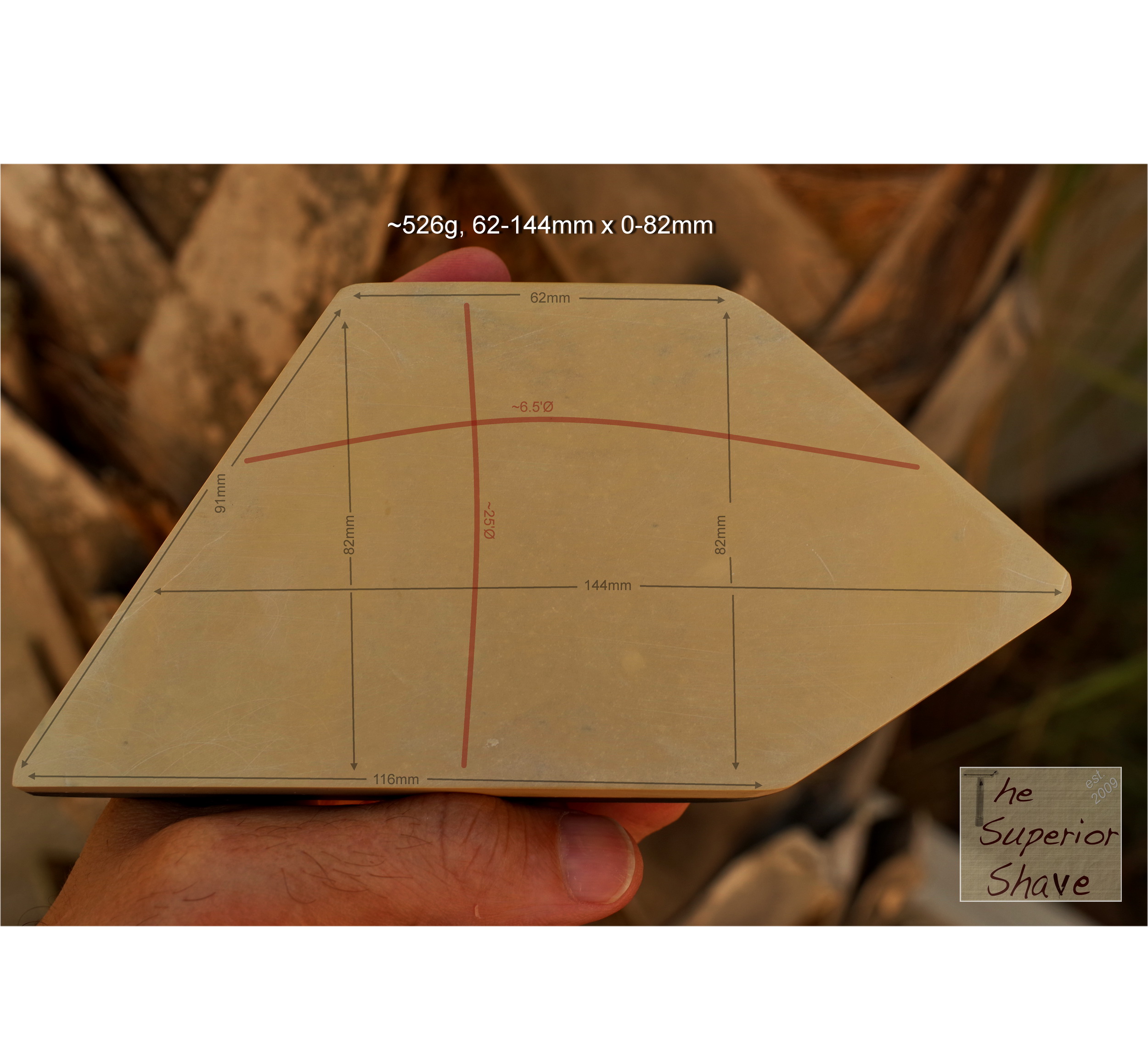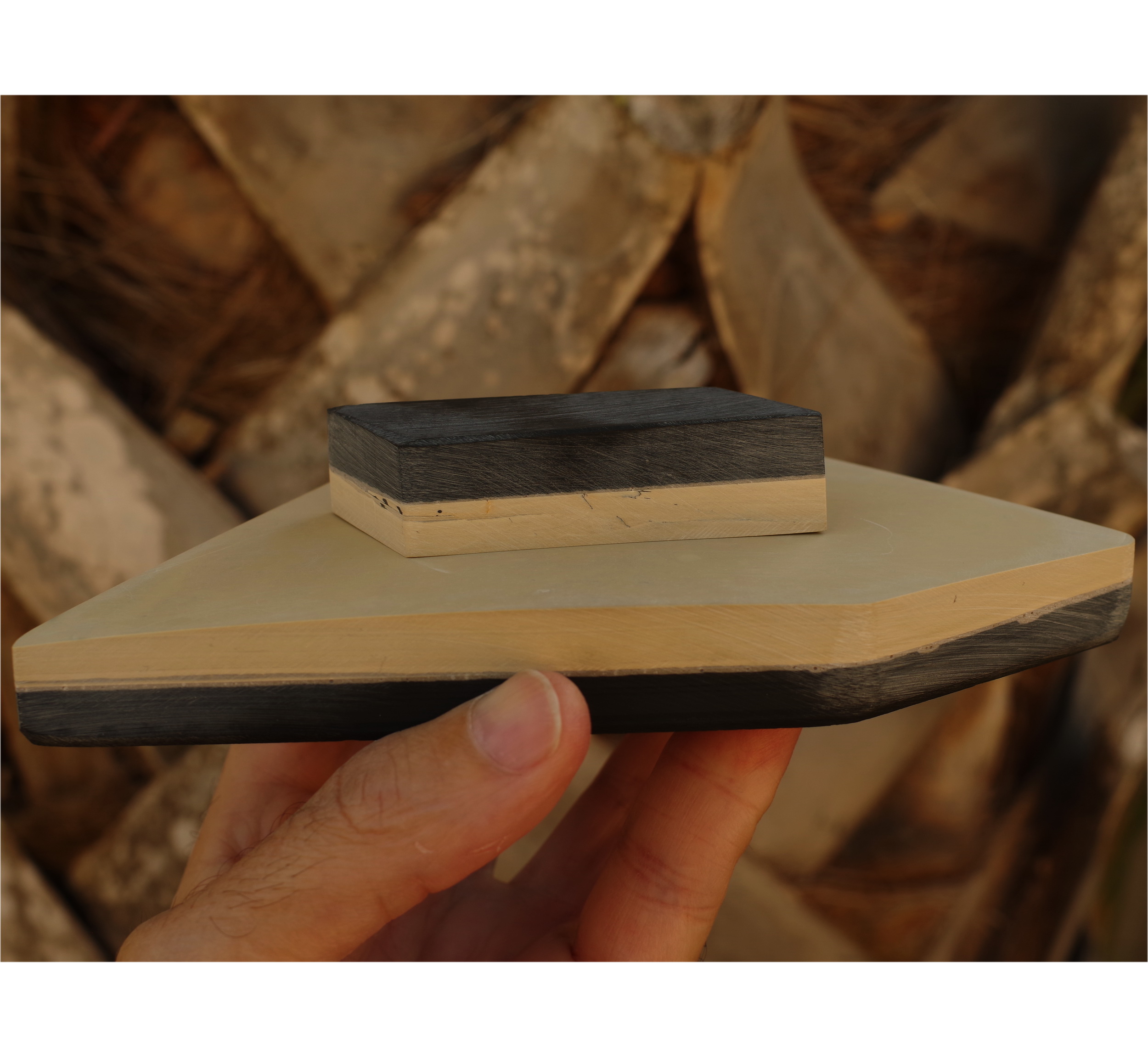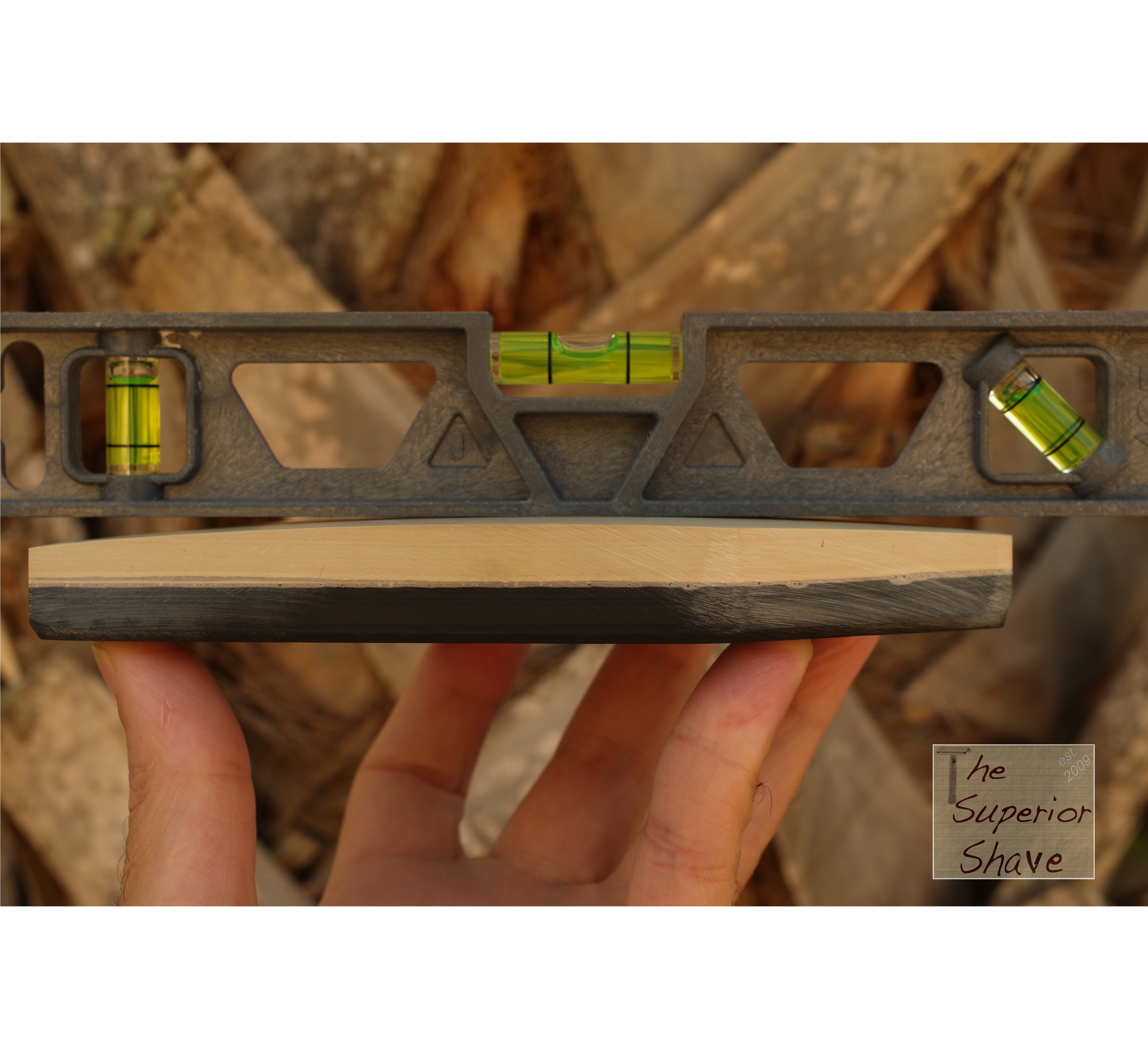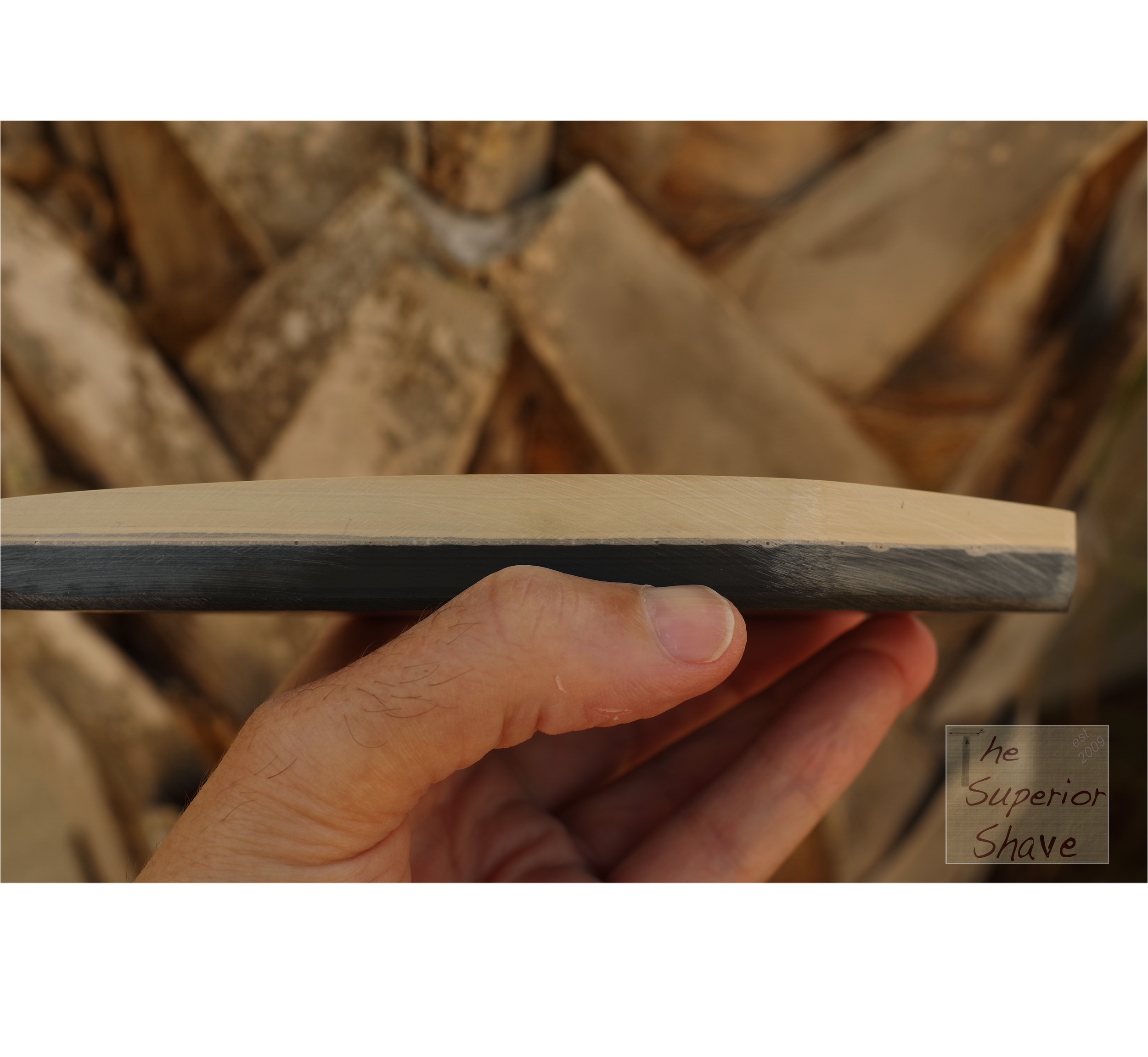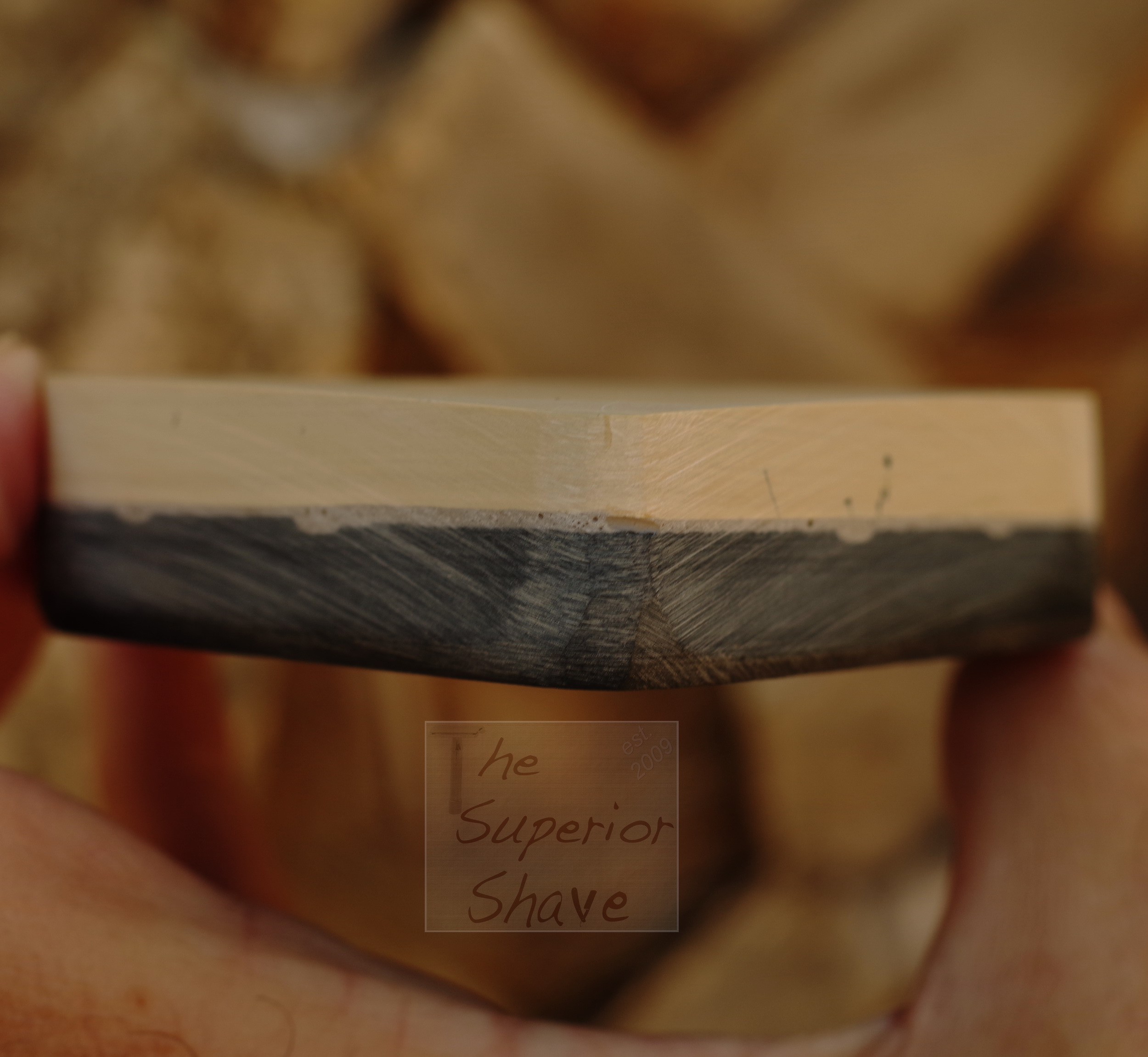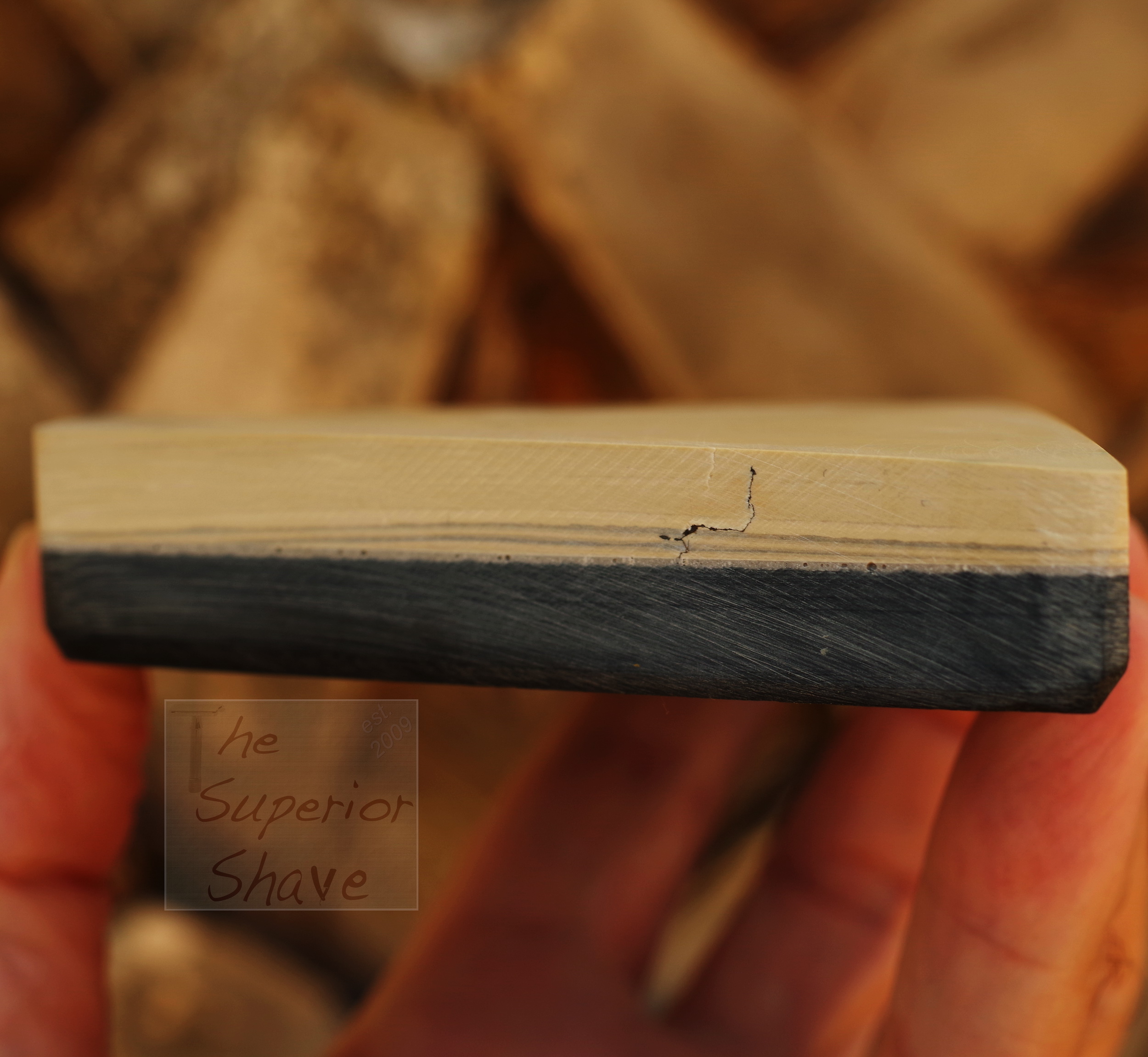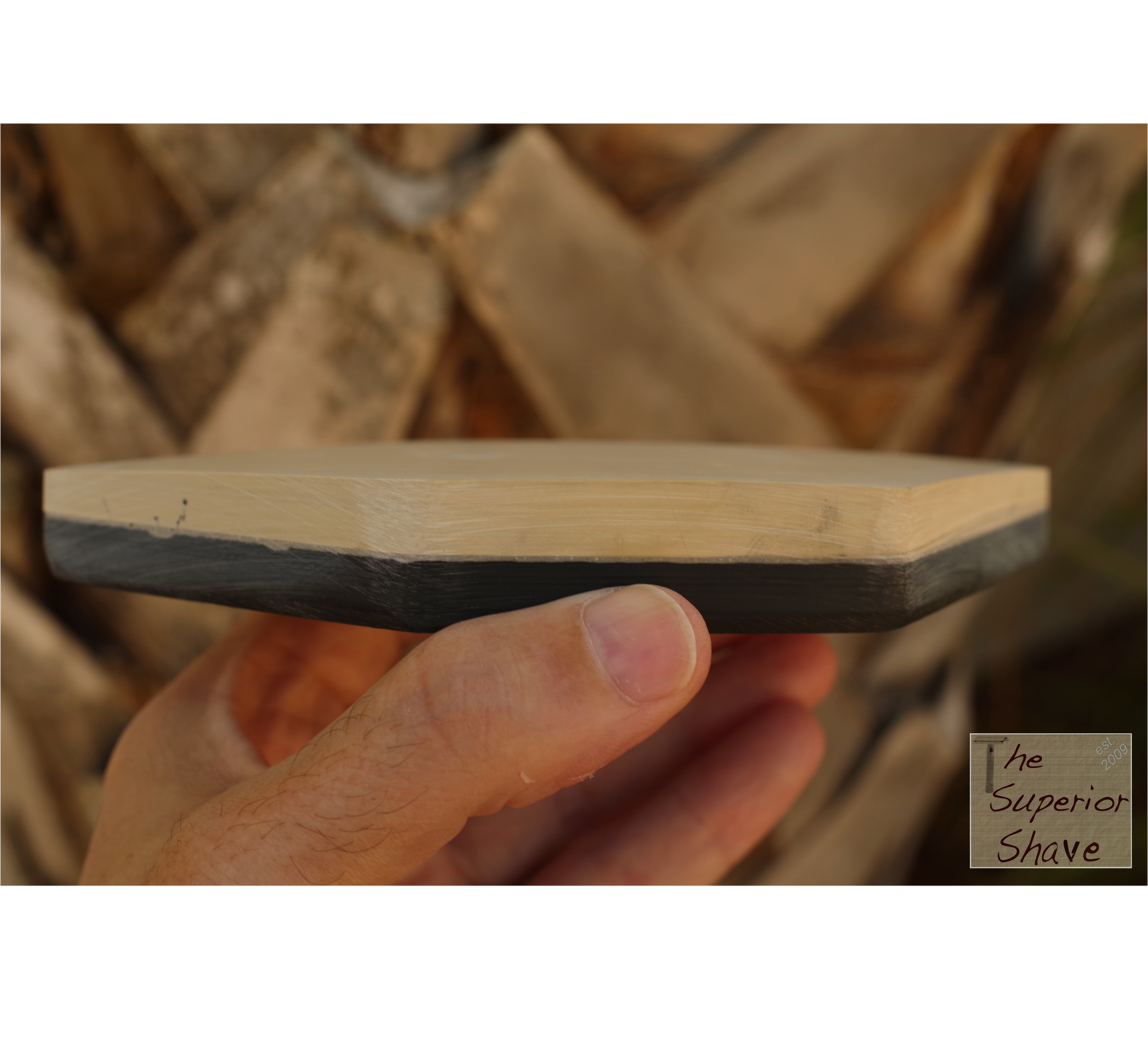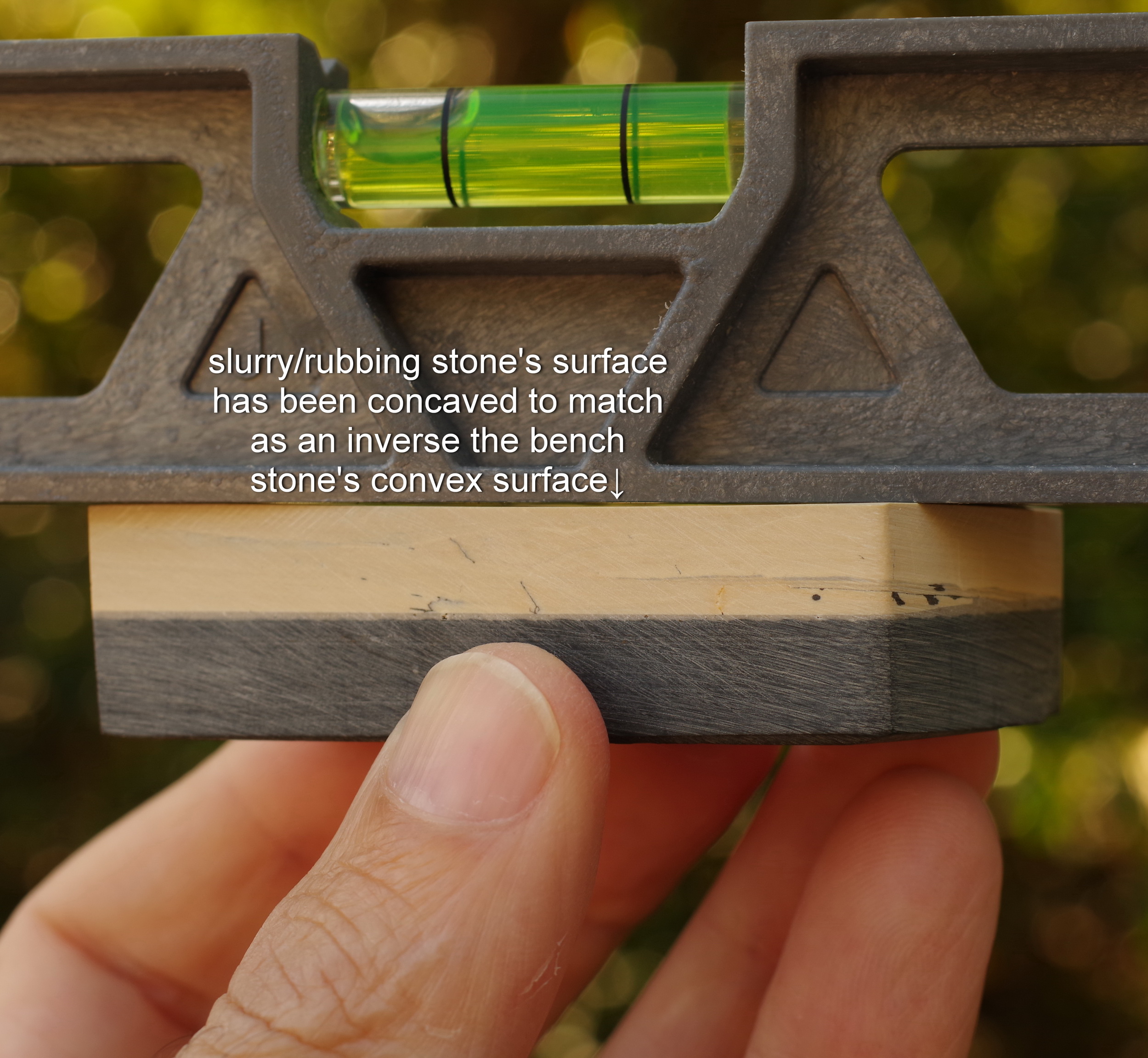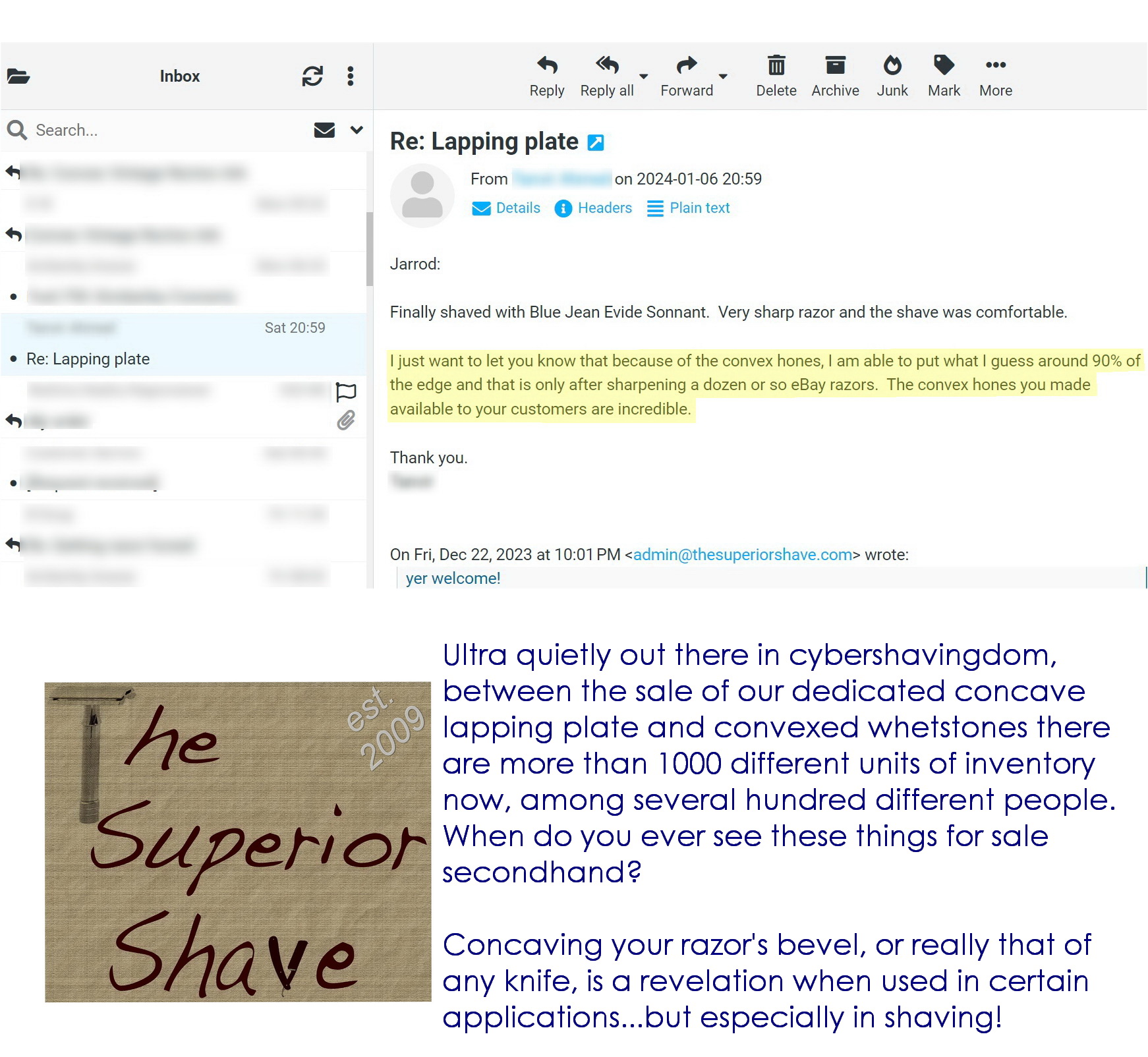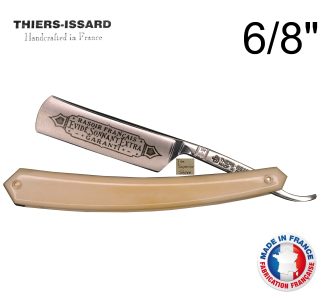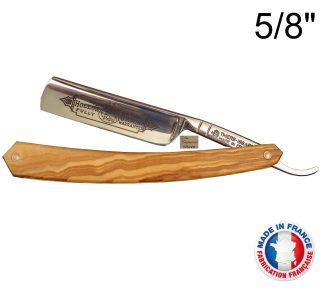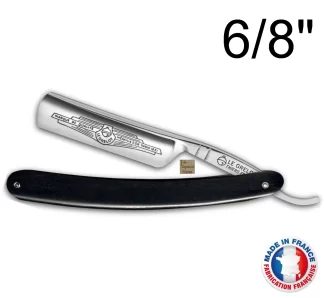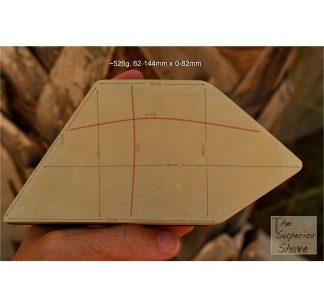Description
This is a #10 size Belgian coticule bout (“bout” = polygon), bonded to slate. One axis has been aligned to a ~6.5’Ø form, with a ~25’Ø shape affected across its the axis which is 90° to the ~6.5’Ø-shaped axis. This stone is either a “La Dressante” or a “La Veinette” stone, as the miners told us only that much.
I’ve been up front about my preference for ‘pure as the driven snow’ “La Grise” coticules for this work because it is just so easy to balance the razor on the imaginary wheel what with their surface and all, and if the surface is completely homogeneous and feature-free beyond a holographic effect the feedback below the blade is simply magical…but they are not fast without slurry, and when you can get one to move quick with slurry, it isn’t fine in action because of all that steel cutting mess riding above the bevel apex where the business is taking place. You would think being a La Grise it would require constant geometric re-address with your included anti-shaped rubbing stone, but if you have not used an elliptically convex whetstone, you will find that they tend to wear quite evenly over time, the razor and your natural motions causing the highest points of the ellipse to be the next spot that gets wear.
So with these harder glassy stones like this one, not the feedback preference I would wish, but the cutting speed and fineness combination is far superior to the Grises. This stone will make dark swarf come off the razor with plain water almost immediately.
There is a free included slurry/rubbing stone, which has been shaped concave to the bench stone. See the images for more information.
For the primary shape of your bevel, face your razor’s spine-to-edge axis toward the long axis of this stone, where it will cut in a nice and concave bevel with its excellent minimum speed on plain water; of course you can use slurry, and the included slurry stone’s well matched to the base stone, but the star of this stone is that its minimum action is both fast and fine. I wish that could be combined with a feedback like a featureless La Grise, but that’s a rare bird…you might find a very soft Dressante which could do that trick, but good luck actually hunting one down.
There is a 25’Ø axis *across* the stone’s ~0-82mm “width”, so as you rub your razor down the long axis of this stone, try to vary where you work upon the bevel, or move the contact patch across the bevel like a circuit. I detail these concepts below;

